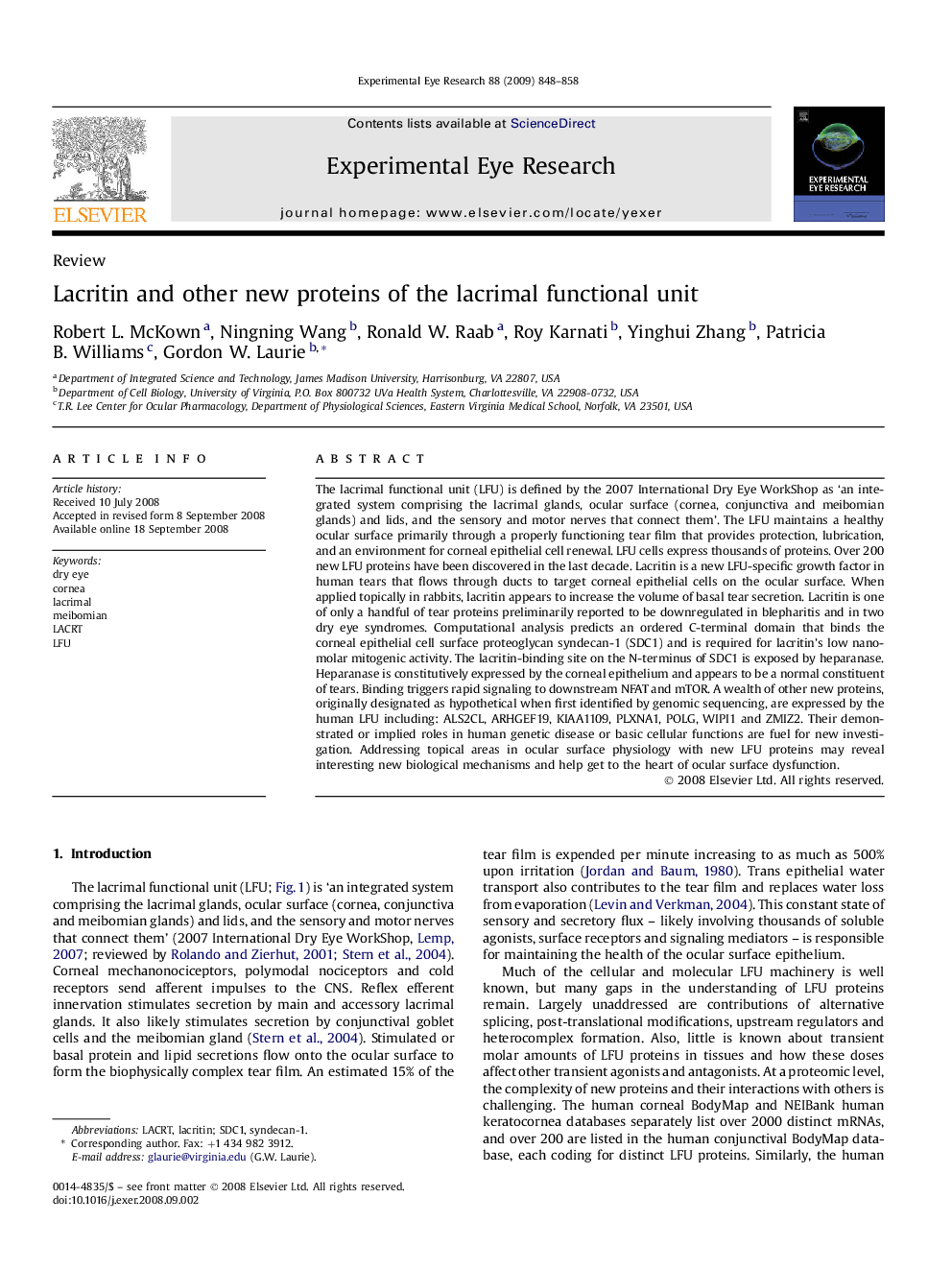| کد مقاله | کد نشریه | سال انتشار | مقاله انگلیسی | نسخه تمام متن |
|---|---|---|---|---|
| 4012685 | 1261205 | 2009 | 11 صفحه PDF | دانلود رایگان |

The lacrimal functional unit (LFU) is defined by the 2007 International Dry Eye WorkShop as ‘an integrated system comprising the lacrimal glands, ocular surface (cornea, conjunctiva and meibomian glands) and lids, and the sensory and motor nerves that connect them’. The LFU maintains a healthy ocular surface primarily through a properly functioning tear film that provides protection, lubrication, and an environment for corneal epithelial cell renewal. LFU cells express thousands of proteins. Over 200 new LFU proteins have been discovered in the last decade. Lacritin is a new LFU-specific growth factor in human tears that flows through ducts to target corneal epithelial cells on the ocular surface. When applied topically in rabbits, lacritin appears to increase the volume of basal tear secretion. Lacritin is one of only a handful of tear proteins preliminarily reported to be downregulated in blepharitis and in two dry eye syndromes. Computational analysis predicts an ordered C-terminal domain that binds the corneal epithelial cell surface proteoglycan syndecan-1 (SDC1) and is required for lacritin's low nanomolar mitogenic activity. The lacritin-binding site on the N-terminus of SDC1 is exposed by heparanase. Heparanase is constitutively expressed by the corneal epithelium and appears to be a normal constituent of tears. Binding triggers rapid signaling to downstream NFAT and mTOR. A wealth of other new proteins, originally designated as hypothetical when first identified by genomic sequencing, are expressed by the human LFU including: ALS2CL, ARHGEF19, KIAA1109, PLXNA1, POLG, WIPI1 and ZMIZ2. Their demonstrated or implied roles in human genetic disease or basic cellular functions are fuel for new investigation. Addressing topical areas in ocular surface physiology with new LFU proteins may reveal interesting new biological mechanisms and help get to the heart of ocular surface dysfunction.
Journal: Experimental Eye Research - Volume 88, Issue 5, May 2009, Pages 848–858